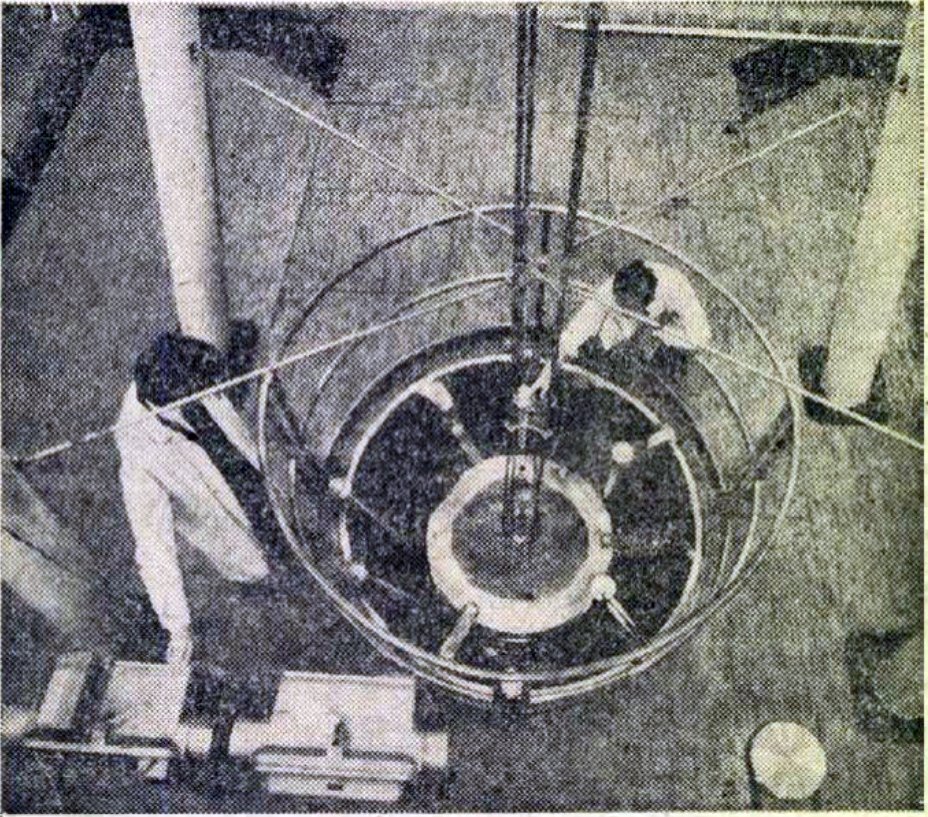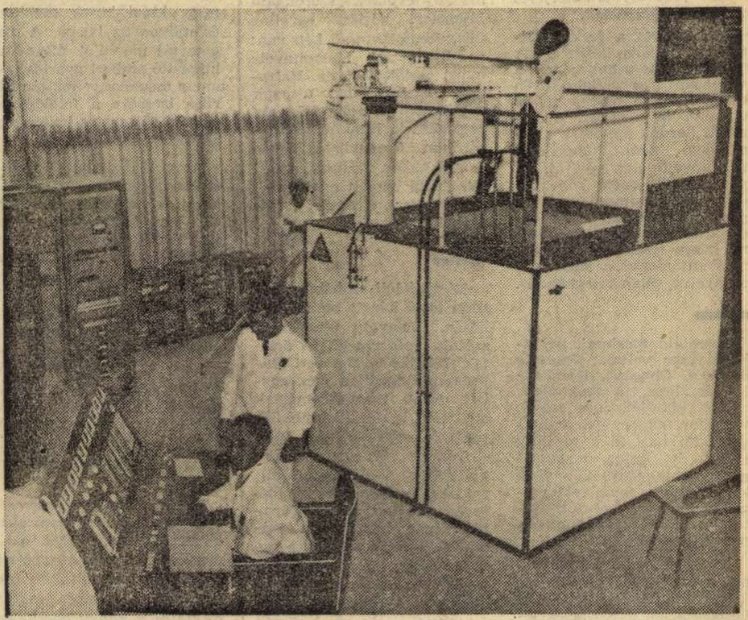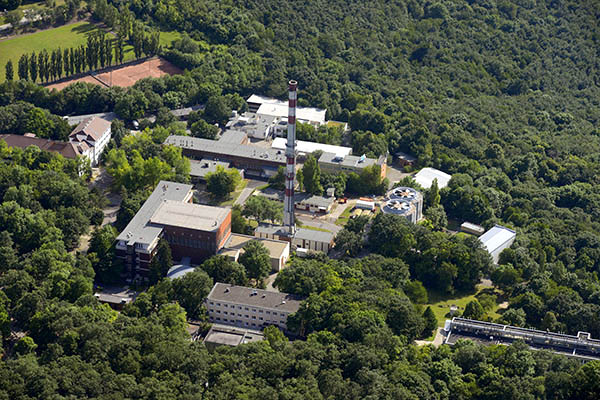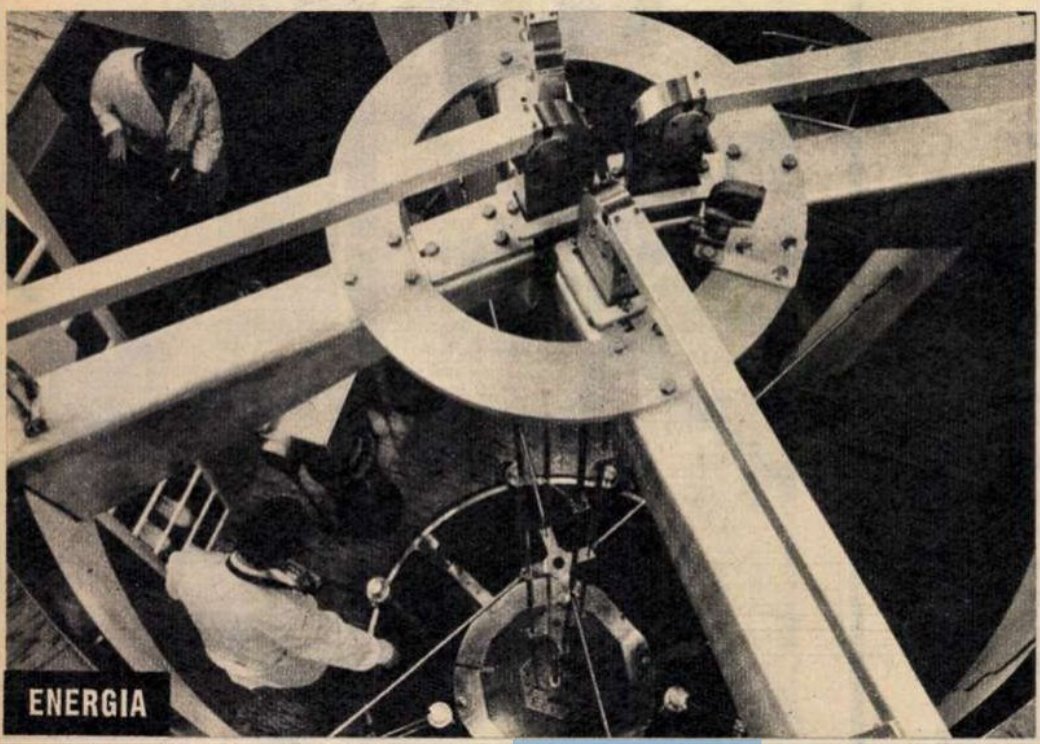Fifty years ago, the Budapest physicists received a piece of equipment from Santa Claus, which was called an "atomic reactor" in the newspaper articles of the time. In fact, this new structure was not inaugurated on 5 December 1972, because of St. Nicholas Day, but because the International Scientific Council of the KGST (Council for Mutual Economic Assistance), which regulated the economic cooperation of countries under Soviet influence, was meeting in Budapest at that time.
The commissioning of the equipment was tied to another anniversary, as the start-up of the world's first nuclear reactor took place 30 years before the event in Budapest. On the website of the Paks nuclear power plant, we can read about the importance of the research started in Budapest 50 years ago:
"Reactor-physics-related research started in the ZR-1 critical system built in 1961 and was followed by the construction of another five critical systems. Among these, the last critical system with the identification number ZR-6 operated for 18 years (1972–1990) and was used for performing measurements supporting the physics of the nuclear reactor type implemented in Paks. The ZR-6 measuring program was one of the most significant experimental installations on a world scale in the history of reactor physics."

One of the few pictures of the reactor, in the 6 December 1972 issue of Népszabadság
The reactor inaugurated in the mountains of Buda, in the Central Research Institute for Physics, or as experts call it, the "critical system", certainly did not mean a reactor the size of the later Paks Nuclear Power Plant, the goal here was not power generation, but scientific research. The tasks of the commissioned reactor were summarised in an article by Népszabadság on 6 December 1972 as follows:
"The low-power reactor, located at a depth of about one and a half floors, was designed for experiments on the improvement and safer operation of nuclear power plants, and its results are already used in the operation of the Paks power plant. The ZR-6 program – within the framework of which the reactor was built – investigates some of the reactor physics problems of nuclear power plants that need to be clarified."
Hungary was no stranger to nuclear reactors, despite the fact that the inauguration of the Paks Nuclear Power Plant was still a long way off, as a research reactor with an initial capacity of 2 MW had been operating at the Central Research Institute for Physics for more than a decade, since 1959. An experimental power plant was also necessary for domestic physical research, and it was located in the Buda mountains, which became one of the bases for domestic physical research. At that time, the University of Technology in Budapest had already completed a research reactor.

The image of the ZR-4 reactor presented and operating at Budapest International Fair in the 21 May 1966 issue of Esti Hírlap
In the 1950s and 1960s, several experimental ZR devices were made at KFKI, where ZR stands for "zero heat", which indicated that these devices did not produce heat or energy, with these, experiments were carried out for the design of large nuclear power plants. Their size was so small that one, bearing the identification number ZR-4, was exhibited at the Budapest International Fair in 1966. Not a model, but a real working device, which was transported back to Csillebérc at the end of the fair, and operated there until 2012.
The last equipment of this long series of experiments was the ZR-6 reactor, handed over 50 years ago. In 1971, seven Comecon countries, Bulgaria, Czechoslovakia, Poland, Hungary, the GDR, Romania and the Soviet Union concluded a research agreement to promote the development of the new type of Soviet VVER 1000 type nuclear reactor, as a result of which the ZR-6 equipment was completed, which after that it operated for 18 years. A total of 100 researchers from 10 countries participated in the research program over the next 18 years.
The inauguration of ZR-6 was therefore a big celebration, as the journalists were invited to the event, and were informed by the director of KFKI academician Lénárd Pál. The president and vice president of the Hungarian Academy of Sciences, the academy's deputy secretary general, and even the first deputy president of the State Atomic Energy Commission of the Soviet Union were there, and the head of the atomic energy department of the Comecon secretariat gave a speech. Physicist Zoltán Gyimesi presented the reactor to Magyar Hírlap in the 6 December 1972 issue of the paper:
"The ZR-6 is a critical system, its tank volume is 10 cubic metres. Currently, it can accommodate 73 VVER-440 heating element bundles. The first two blocks of the Paks nuclear power plant will also be like this, says our leader.
"Where was the reactor itself made?" – The equipment as a whole is Hungarian in design. In addition to KFKI, Iparterv, Kiskunfélegyházi Chemical Machinery Factory and Láng Machinery Factory participated in the construction. The reactor vessel, for example, is the work of the latter company.”
A year and a half later, the implementers of the series of experiments, Ferenc Szabó, Zoltán Gyimesi, Zoltán Szathmáry, László Túri and János Valkó, were honoured by the Hungarian Academy of Sciences. As mentioned, the experimental equipment operated in Csillebérc for 18 years.

Skyline of KFKI (Photo: Wikipedia)
Although the ZR-6 experimental nuclear reactor in Budapest was inaugurated in principle to coincide with the 30th anniversary of the launch of the first nuclear reactor, it was actually delayed by a few days, as the first truly operational nuclear reactor was launched on 2 December 1942 in Chicago. Why was this anniversary important for a Hungarian nuclear reactor under Soviet influence? Because the Chicago power plant was designed by Enrico Fermi and Leó Szilárd.
Cover photo: The image of the ZR-6 in the 12 December 1972 issue of Tükör magazine




































Hozzászólások
Log in or register to comment!
Login Registration